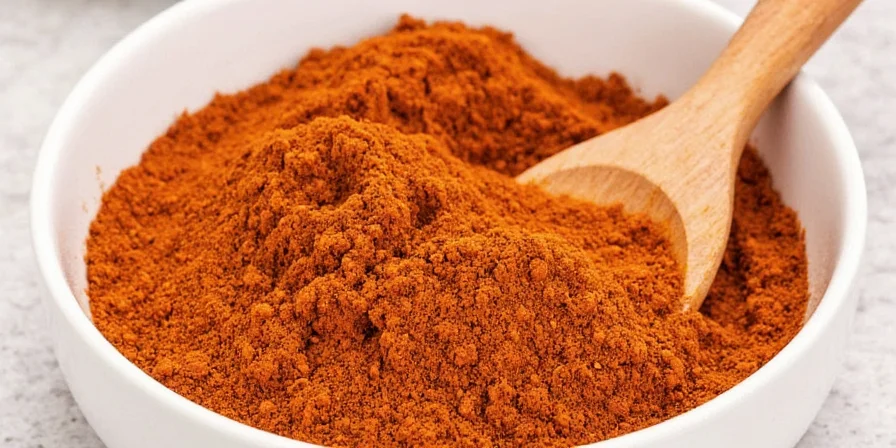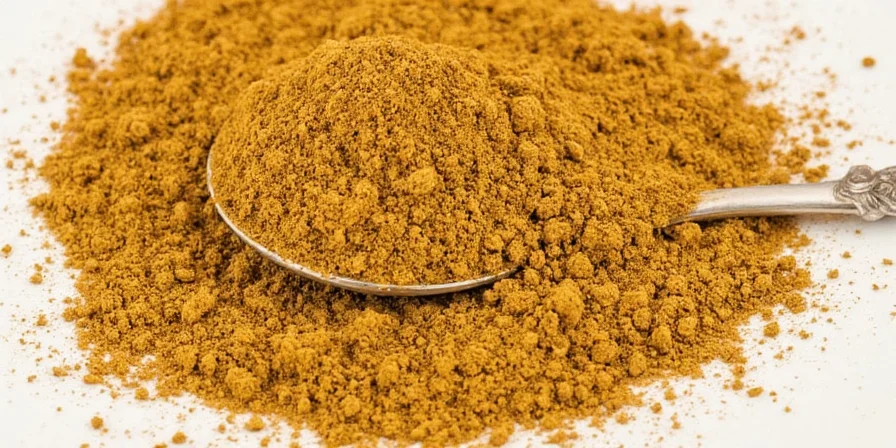How to Use Hatch Chile Powder: Essential Techniques Every Home Cook Needs
Properly using Hatch chile powder begins with understanding it's not just a spice but a flavor foundation. Unlike generic chili powders, authentic Hatch chile powder requires specific techniques to unlock its full potential. Start by toasting 1-2 tablespoons in a dry skillet for 60-90 seconds until aromatic, then incorporate using the "early addition for base flavor, finish with fresh sprinkle" method. This two-stage approach creates layered heat perception rather than one-dimensional spiciness, with milder varieties like Big Jim (500-2,500 SHU) ideal for beginners while hotter Silbo (8,000-10,000 SHU) works best as finishing accent.

Understanding Hatch Chile Powder: Beyond Generic Chili Powder
Hatch chile powder originates from chile peppers grown in the Hatch Valley region of New Mexico, though similar varieties are now cultivated across multiple Southwestern states. The distinctive flavor profile results from specific growing conditions including high desert climate, mineral-rich soil, and traditional farming methods. Unlike generic chili powders, authentic Hatch chile powder maintains the nuanced characteristics of specific chile varieties, ranging from mild sweetness to pronounced heat.
The powder comes from both green (unripe) and red (fully mature) chile varieties, each delivering unique culinary properties. Green Hatch powder offers brighter, grassier notes suitable for fresh applications, while red Hatch provides deeper, earthier flavors ideal for slow-cooked dishes. Understanding these distinctions helps home cooks select appropriate applications for maximum flavor impact.
Decoding Heat Levels and Flavor Profiles for Perfect Pairing
Understanding the specific characteristics of different Hatch chile varieties prevents common cooking mistakes. The following reference helps match varieties to appropriate culinary applications:
| Variety | Heat Level (SHU) | Flavor Characteristics | Ideal Applications |
|---|---|---|---|
| Big Jim | 500-2,500 | Earthy, moderately sweet | Enchilada sauces, mild salsas |
| Guero | 2,500-5,000 | Citrusy, slightly floral | Fish dishes, vegetable preparations |
| Numex Twilight | 5,000-8,000 | Complex, fruit-forward | Stews, braises, marinades |
| Silbo | 8,000-10,000 | Sharp, intensely flavorful | Specialty sauces, flavor accents |

Professional chefs recommend starting with milder varieties when experimenting with new recipes, gradually incorporating hotter varieties as flavor understanding develops. This approach ensures balanced heat integration without overwhelming other flavor components.
Proper Toasting Technique for Maximum Flavor Extraction
Toasting Hatch chile powder properly activates essential oils and deepens flavor complexity. This technique transforms basic powder into a nuanced seasoning component:

Follow these precise steps for optimal results:
- Use a ceramic or cast-iron skillet over medium-low heat
- Add 1-2 tablespoons of powder
- Stir constantly for 60-90 seconds until aromatic
- Immediately transfer to a cool bowl to stop cooking process
Improper toasting (overheating or uneven stirring) creates bitter compounds that diminish quality. The ideal result shows no visible smoke and emits a rich, roasted aroma without burnt notes.
Innovative Flavor Pairings That Enhance Hatch Chile Characteristics
Traditional Southwestern cuisine offers valuable lessons in complementary flavor pairings that enhance rather than compete with Hatch chile characteristics:

Consider these professionally tested combinations:
- Acidic components: Lime juice or vinegar brightens earthy notes in stews
- Sweet elements: Roasted corn or sweet potato balances moderate heat levels
- Fatty mediums: Cooking in olive oil or with avocado creates smooth heat distribution
- Umami sources: Mushrooms or tomatoes deepen overall flavor complexity
These pairings follow established culinary principles where complementary elements enhance rather than mask the distinctive Hatch chile profile.
Achieving Balanced Heat Integration in Your Dishes
Professional kitchens use strategic heat integration rather than simple addition. For optimal results:

Implement these methods:
- Add powder early in cooking for mellow, integrated heat
- Reserve small portion for finishing to preserve bright notes
- Combine with dairy or fats to moderate perceived heat
- Always taste before final seasoning adjustment
This approach creates layered heat perception rather than a single-dimensional spicy impact, resulting in more sophisticated flavor profiles.
Optimal Storage Practices for Long-Lasting Freshness
Maintaining flavor integrity requires proper storage techniques:
- Use opaque, airtight containers to prevent light exposure
- Store in cool, dark location away from heat sources
- Consider oxygen absorbers for long-term storage
- Label containers with purchase date for freshness tracking

Quality deterioration typically occurs after 8-12 months, though properly stored powder maintains acceptable flavor for up to 18 months. Regular sensory evaluation helps determine optimal usage timeframe.
Creating Authentic Homemade Hatch Chile Powder
Professional-grade results require precise preparation methods:
- Select ripe, undamaged chiles appropriate for intended heat level
- Roast directly over flame until evenly blistered
- Steam in covered container for 15 minutes to loosen skins
- Peel and remove seeds based on desired heat intensity
- Dehydrate at 135°F until completely dry (8-12 hours)
- Grind using dedicated spice mill for consistent texture
- Store immediately using recommended methods

This process preserves volatile compounds responsible for distinctive flavor notes that commercial processing often diminishes.
Building Confidence in Hatch Chile Powder Application
Developing proficiency with Hatch chile powder follows structured progression:

Follow this development path:
- Start with mild varieties in simple applications
- Document reactions to different heat levels
- Experiment with controlled increments (1/8 teaspoon)
- Record successful combinations for future reference
- Gradually expand to more complex recipes
This methodical approach builds reliable skills without overwhelming trial-and-error experiences.
Cultural Context of Hatch Chile in Southwestern Cuisine
Understanding Hatch chile's cultural significance provides deeper culinary insight. In traditional New Mexican cuisine, chiles function as vegetables rather than merely seasoning agents. The seasonal 'roasting' ritual during harvest reflects cultural importance beyond mere cooking technique.
Authentic preparation respects the chile's role as both flavor component and cultural symbol. Contemporary chefs increasingly recognize that proper handling honors both culinary tradition and ingredient integrity. This perspective transforms simple powder usage into meaningful culinary practice connected to regional food heritage.
Essential Hatch Chile Powder Questions Answered
- Q: What makes Hatch chile powder different from regular chili powder?
A: Hatch chile powder comes specifically from chile varieties grown in the Hatch Valley region of New Mexico, each with distinct flavor profiles. Regular chili powder typically contains a blend of spices including cumin, garlic powder, and oregano, while authentic Hatch powder contains only ground chile peppers. - Q: How can I tell if my Hatch chile powder has gone bad?
A: Fresh Hatch chile powder maintains a vibrant red or green color and strong aromatic scent. When degraded, it becomes dull in color, loses its characteristic aroma, and may develop musty notes. Properly stored powder remains usable for 8-12 months. - Q: Can I substitute regular chili powder for Hatch chile powder?
A: While possible in some recipes, substitutions significantly alter flavor profiles. Regular chili powder contains additional spices that change the fundamental taste. For authentic Southwestern dishes, proper Hatch variety selection provides irreplaceable flavor characteristics. - Q: What's the best way to measure Hatch chile powder accurately?
A: Use proper measuring spoons rather than estimating. For precise heat control, start with 1/8 teaspoon increments. Professional chefs recommend leveling measurements rather than heaping to ensure consistent results. - Q: Which dishes showcase Hatch chile powder best?
A: Traditional New Mexican dishes like red or green chile stew, enchiladas, and carne adovada highlight its qualities. Modern applications include spice rubs, roasted vegetable seasoning, and even chocolate-based mole sauces where its complexity shines.
Perfecting Your Hatch Chile Powder Technique
Mastery of Hatch chile powder involves understanding its distinctive characteristics and applying them thoughtfully. By recognizing regional variations, implementing proper preparation techniques, and respecting cultural context, home cooks can achieve restaurant-quality results.

The journey from basic spice usage to informed application transforms ordinary meals into culinary experiences. With careful attention to quality, storage, and technique, Hatch chile powder becomes a versatile tool for creating memorable dishes that balance tradition with personal expression.











 浙公网安备
33010002000092号
浙公网安备
33010002000092号 浙B2-20120091-4
浙B2-20120091-4